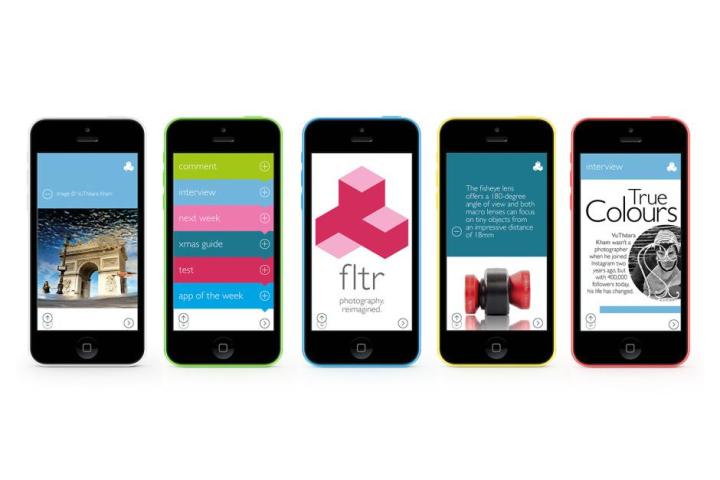
As another indication that smartphones are playing a huge role in how we take photographs today (as if you needed one), the British Journal of Photography is launching a new publication called FLTR that focuses solely on smartphone photography. And, since smartphones have become one of the top ways to consume media, the new pub is only available as an app for the iPhone (with a small online presence). FLTR calls itself “the world’s first smartphone photography magazine, published weekly and designed exclusively for the iPhone.”
“The best camera is the one that’s always with you, and the popularity of the smartphone has made photographers of us all. FLTR is the first magazine to explore this new and universal language of photography, offering an unparalleled source of inspiration and technical know-how,” the magazine writes.
Although the app itself is a free download, each weekly issue will cost 99-cents per week, or $20 for the year. With everything going social, images tagged with #FLTR in the usual places (Facebook, Twitter, Instagram, etc.) may get picked up and published in the pub.
What will FLTR offer readers? “Created by the award-winning team behind British Journal of Photography, the world’s longest-running photography magazine, FLTR offers exclusive interviews with both amateur and professional photographers who have found success with their smartphones. There are also stunning pictures, and in-depth reviews of the best photography apps and accessories for your smartphone, plus how-to guides to take your photography to the next level and take advantage of your smartphone’s capabilities.”
FLTR represents where BJP thinks photography and publishing are heading, i.e. smartphones and tablets. But we’ve seen publications try the smartphone-only approach before, and none have been incredibly successful (remember Rupert Murdoch’s The Daily?) There’s no telling if users will flock to this new medium and, more importantly, pay for it.
(Via Imaging Resource)


